Self-help literature, also known as ‘Therapeutic’ or ‘Philosophical’ literature, is a huge market that does a lot of good. Its writers tend to be experts in their field, either through educational or experiential pathways, who have distilled what they know into something that can offer help to their readers.
These works can take the form of advice, courses or even fictional stories that relate the message in an engaging manner. The intent is always the same though – to provide the reader with the intellectual tools they need to improve some facet of their life.
When an author writes a self-help book, they’re entering into a covenant with the reader. This covenant is a promise that the writer has done everything in their power to produce something that will help, knowing that when readers pursue self-help literature it’s the same as a person asking for support.
The reader trusts your judgement, so make sure you mean what you say.Click To TweetIt’s because of this covenant that it’s so important to get self-help right. This begins with making sure that you are the right person to be giving advice, and works its way through what you say to how you choose to say it. That’s why in this article, I’ll be presenting the golden rules of writing great self-help literature. Each ‘rule’ is a piece of advice which will help self-help authors to give their readers the very best. Taken together they provide a framework for how to write a self-help book. If, however, you’re pushed for time, there is a single secret to writing self-help that’s at the core of any good advice on the subject.
That secret is efficacy.
Efficacy is everything
Efficacy is the ability to produce a desired outcome or result, and it’s the essential ingredient of effective self-help literature. The truth about most situations is that we already know what will make them better. Whether it’s a lifestyle problem or an emotional issue, the steps to a desired result can usually be found quite easily. What’s missing, what stops people from taking those steps, is the belief that they will work.
It’s easy to see why this is the case – if you’re currently in a deep hole then it’s difficult to imagine being on top of a mountain. If your problem has made you feel in some way powerless (physically, financially, emotionally) then the belief that you have the power to change your situation can feel at best optimistic and at worst constantly contradicted by reality.
The success of self-help literature lives and dies on efficacy. Click To TweetEfficacy is the belief that your goals are reachable – both that the result you want is possible, and that you as an individual can achieve it. This is the quality that great self-help or philosophical texts must possess. Yes, they should include the practical steps a person needs to help themselves, but they also need to make those steps feel manageable and make the reader feel energized and capable.
There are lots of ways to build efficacy, I’ll be exploring them in the rules below, but make no mistake: that is the ultimate goal of this kind of writing. The surprising thing is that self-help book readers know this, and hunt out books which look approachable, practical and useable.
Titling for efficacy
So how do you write a self-help book that indicates these qualities to your readers? One way is through the titling of your work, with self-help books tending to fall into three categories. First, there are the books named after their goals. These are books like Tim Ferriss’ The 4-Hour Work Week, Daniel Goleman’s Emotional Intelligence, Gretchen Rubin’s The Happiness Project and Stephen Covey’s famous The 7 Habits of Highly Effective People. These books are labelled like cereal boxes – the front describes what you can expect to find inside.
The second school of naming is the ‘how to’ book, such as Dale Carnegie’s How to Win Friends & Influence People, Sarah Bakewell’s How to Live and Lee Crutchley’s How to be Happy. These books are named more like gym courses, stressing the effects but also making it clear they have a plan for how you’ll get there.
The final type of titling is the ‘you’ book. This addresses the reader directly, assuring them that this tool will work for them as an individual. Examples include Louise Hay’s You Can Heal Your Life, David Reuben’s Everything You Always Wanted to Know About Sex (But Were Afraid to Ask), Viktor Pekelis’ Realize Your Potential: Discover Your Hidden Powers and over half the output of self-help juggernaut Paul McKenna, including: I Can Make You Happy, I Can Make You Rich, I Can Make You Sleep and 3 Things That Will Change Your Destiny Today!
Notice that many titles borrow from multiple schools: McKenna’s Change Your Life in 7 Days combines all three, promising a specific outcome to the individual reading it and even adding a timeframe (and a short, manageable one at that).
Titling is an important part of self-help success. Click To TweetOf course there are always exceptions to the rule – Spencer Johnson’s Who Moved My Cheese? is difficult to classify – but even the outliers will use some of the above types of language (Johnson’s has the tagline ‘An A-Mazing Way to Deal with Change in Your Work and in Your Life’).
Whichever category they fall into, each of the above book titles is communicating the same message, ‘you can use this, this will get you what you want’. This isn’t just a marketing gimmick; it’s what readers want and how self-help books work. Addressing the reader directly, reminding them of their goals and assuring them there’s a path to those goals: these ingredients aren’t just for the cover, they’re essential throughout your content.
That may sound difficult to achieve, but happily that’s where the rules come in.
Rule #1 – Work in steps
Everyone knows that the way to achieve a big task is to break it down into smaller components, and that’s great advice for self-help books. What’s also important to understand is how these steps can be used to build your reader’s sense of efficacy.
Present the completion of a step as a success or victory, and you make your reader feel capable. You also give them the ability to look back on the course as a series of victories, and therefore to imagine even more victories in their future.
Allan and Barbara Pease’s The Definitive Book of Body Language is a self-help book that’s halfway between an encyclopedia and a course. While it presents what purports to be a comprehensive overview of body language, it does so in a way that’s easy to digest, with chapter titles like ‘The 13 Most Common Gestures You’ll See Daily’ and ‘Hand and Thumb Gestures’. The contents page further breaks down these chapters into subheadings. The ‘Hand and Thumb Gestures’ chapter takes seventeen pages, and is broken down into thirteen subheadings. This means that on almost every page the reader has finished a section.
Other books do something similar by breaking chapters into repeating sections. First they’ll outline an issue (first section), then outline how it might affect the reader (second section), then have questions the reader can answer (third section), then provide some advice for dealing with the issue (fourth section), then summarize what’s been discussed (fifth section), possibly followed by an example case of someone overcoming that issue (sixth section). This structure makes progressing through the book a quantifiable journey, and repeating this kind of breakdown means readers always know what to expect next.
Seeing these steps coming is as important as progressing through them, since it allows the reader to set goals and, most importantly, to accurately imagine their progress. This is vital for fostering feelings of efficacy – the reader should be able to picture their success. Lots of short, manageable sections convey the idea of a course which adequately addresses the issue, but in a way that the reader finds accessible.
Splitting your advice into sections like this can be a challenge, since it means there are times when you have to focus on one thing without elaborating. Don’t worry though, because you can and should fix this by repeating yourself.
Rule #2 – Repeat yourself
Repetition is generally frowned on in fiction, but if you’re writing a self help book it’s a must. That’s because efficacy is a constantly waning resource, and the book needs to keep topping it up. Core ideas have to be revisited and revisited dogmatically, giving the reader a constant reference through the text and backing up any points which might otherwise be lost.
Technically speaking, this article could be considered a sort of self-help text. The core idea is, of course, the necessity of creating efficacy. The other advice I present is important, but it’s all related to that core idea, and so it’s important to keep coming back to it.
In Paul McKenna’s I Can Make You Thin, the author focuses on the idea of a ‘hunger scale’. This runs from ‘physically faint’ and ‘ravenous’ at 1 and 2, to ‘bloated’ and ‘nauseous’ at 9 and 10. This idea is introduced on page 43, and returned to on page 56 under the subheading ‘Revisiting the hunger scale’. Between these pages, McKenna expands on his idea of the scale and shares tips on how to use it to control eating behavior. He includes two ‘golden rules’ between the sections, meant to help readers avoid the extreme ends of the scale.
He does this in clearly marked steps with their own subheadings, before returning to the hunger scale and talking more about it. He then talks, again in short sections, about why the extremes are so problematic, and the positive outcomes of heeding his advice, before answering some frequently asked questions on the topic. The difference in his writing after the first mention of the scale and after the second is in the assumed comprehension of the reader. Once he reaches the second mention, the reader is familiar with the scale and has some practical appreciation of it. McKenna can then talk more completely about the scale and its uses; since the readers now get the ‘how’, they can appreciate the ‘why’.
While McKenna could have explained the how and why together, he’d have been a fool to do so. His audience not only has the victory of many completed steps, but by bringing them back to the same idea McKenna demonstrates how far they’ve come. A thing they didn’t understand thirteen pages ago is now familiar to them. Progress is demonstrated, and the importance of the device is underlined by repetition. The chapter ends with ‘Claire’s Story’, a testimonial from a woman explaining how the hunger scale has helped her – this, unfortunately for a diet book, is the icing on the cake.
Rule #3 – Use relatable examples
Repetition helps readers reflect on where they are in the moment, and steps help them visualize their success within the confines of the book or course. While both of these are useful, the real value of efficacy is the ability to imagine a more distant future. The reader needs to be able to imagine a future where they have what they want, and therefore see themselves as someone on the path to getting it.
Examples can provide this, showing the reader that they are at a recognizable point in the journey to their goal. This is incredibly effective, but it’s important to make examples relatable.
Efficacy isn’t about believing a problem can be overcome, but about someone believing they can overcome that problem. Generic success examples won’t make that point, since that just proves someone else has been successful.
What's in a great self-help book? Small steps, repetition and relatable examples.Click To TweetThere are two main ways to deal with this. The first is to emphasize that while famous or well-known people have succeeded, they have also at some time suffered from the same difficulties as the reader. This is the route taken by Katty Kay and Claire Shipman, the authors of The Confidence Code. Through the examples of high-powered individuals such as Christine Lagarde, Angela Merkel and Elaine Chao, they aim to show that all women, even those who have found incredible success, have dealt with similar problems when it comes to confidence in the workplace.
If Amazonian athletes, hard-charging military graduates, and global financiers are susceptible to self-doubt, no wonder we mere mortals have issues.
– Katty Kay and Claire Shipman, The Confidence Code
This is a good technique for making the reader feel that their situation is normal, and therefore making them feel that their chances for success are no less remote than anyone else’s. It will only take the reader so far, however, and generally won’t be enough to really make them envision a version of themselves who has already succeeded.
More effective are the examples in McKenna’s I Can Make You Thin. These tend to appear at the end of every chapter, including a short, first person account of someone’s weight loss, the amount they lost, and pictures of them before and after. Although some might see the before and after pictures as a gimmick, they’re powerful efficacy tools as they present the reader with proof that the person in the example was in their situation. It’s difficult to see successful people and imagine them before they made it, but this kind of objective evidence makes it far easier. The examples themselves tend to be all about making their writers feel relatable. The practical steps are handled elsewhere – it is the sole responsibility of the examples to provide evidence that they work, and that they can work for the reader.
I had tried every sort of diet: fat counting, calorie counting, I even tried not eating until after five o’ clock in the evening. I had finally given up. I was fat. It ran in my family. What could I do about it? Then a colleague told me she’d done the Paul McKenna system and she was feeling really good, so I thought I’d give it a try.
– Kate Howlett, ‘Kate’s Story’ in I Can Make You Thin by Paul McKenna
This story is a masterclass in creating efficacy. Kate’s dieting stories are extreme, likely in excess of what the reader has tried. This says ‘I was in a similar or even worse situation than you’ (a later story outright states ‘If I can do it, anybody can’). She then lists some common excuses, likely echoing things the reader has said or thought. Finally, she mentions that someone recommended the Paul McKenna system to her – the very thing that is happening to the reader as they are reading her words. Short of fitting a little mirror under her name, McKenna does everything he can to show the reader that Kate has been in their position. More than that, he shows that she is further down the same road and has found success.
This may sound extreme, but it leaves the reader in no doubt that they can fulfill their goals. It provides the energy needed to power through the steps you offer, beginning a self-powering process where readers keep progressing because of the confidence gained from how far they’ve already come.
Efficacy is everything revisited
The rules above are all about making your work as useable as possible, and of course it’s your job as the writer to match your reader’s efficacy with useful, practical advice. Remember that your reader has sought out help and, while your advice might help them get to a better place, it might take them longer to implement what you’ve taught them than it does to finish your book.
That means that the efficacy devices you use throughout your book have to be enough to motivate the person you imagine picking it up. No matter where you hope to take them, or who you believe they can become, there’s never a time when you can let up on making it feel possible to achieve the stated goal. It’s because of this that so many self-help books contain exercises you can perform in everyday life (or even, in the case of McKenna, a CD to play as you go to sleep). These connect the reader back to the efficacy the book gave them, ensuring that its teachings last beyond the final page.
For more advice self-help or philosophical writers might find useful, check out How To Nail Your Non-Fiction Introduction and Do YOU Need To Write In The Second Person? Or if you’re writing from experience, try Are You Ready To Share Your Personal Story With Your Readers?
Have you had a good or bad experience with self-help literature? What did the author do to make it so good, or what could they have done to improve it? Let me know in the comments.
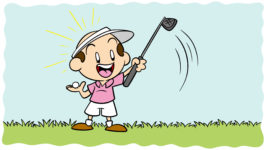

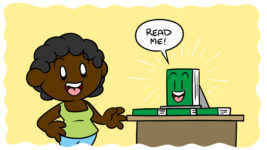
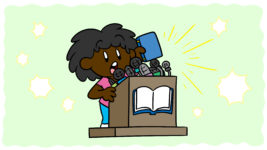
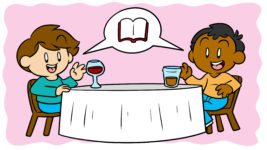
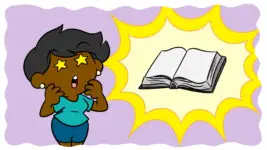
43 thoughts on “The 3 Golden Rules Of Writing A Self-help Book”
Rob,
Thanks for this post. I found it very relatable; I’m hoping it is efficacious.
Nathan
Hi Nathan,
Ha, thanks! I hope so too.
Best,
Rob
Rob,
Thanks,this has given me a boost to start on my ten year old dream of writing a book.
Warm regards
Gwen
Hi Gwen,
Excellent, I’m glad it was of use to you.
Best wishes,
Rob
One of the best articles I have ever read! Thank you!
Hi Ethan,
Great – I’m really glad it was useful.
Best,
Rob
Good: Helpful indeed. I have got vital input for my maiden book on self help book.
regards
Hi Dr. Bharat,
Great – helping authors is always our intention.
Best,
Rob
Hi Rob,
I am new to your blog and found this very useful. I am right in the middle of trying to get my book on second marriages done and this really helped me figure out the structure for one the chapter I am struggling with. It also confirmed that I am on the right track. Thanks so much!
Hi Sharilee,
Fantastic – I’m really glad the article was so useful.
Best,
Rob
How would you suggest I get someone to read over my book?
Judy
Hi Judy,
Thanks for your comment. I’m not sure what type of reader you mean, but you can find professional editors and experts through the net, and the same can be done for beta readers, though it’s often just as easy to investigate writing groups in your area.
Best,
Rob
Thank you very much. I am in the process of planning my first self-help book and I found this article very helpful and motivational.
Hi Mustafa,
I’m really glad we could help. Thanks for commenting.
Best,
Rob
Great article, really helpful. Thanks a lot
No problem – I’m glad it was helpful.
Rob,
This was one of the most insightful and structured articles on self-help writing. Thank you for your time and efforts in teaching us the ropes!
Thank you!
Hi Bill,
My pleasure – I’m glad it was useful.
Best,
Rob
What a great post it is for authors and bloggers.
The article indeed was a self help article.
Thank You Rob!
Hi Harsh,
Thanks – glad you found it useful.
Best,
Rob
These rules are good in guiding…. Pleasure.
Hi Purity,
Thanks for commenting and for the kind words.
Best,
Rob
Dear Rob,
Wonderful guidelines and valuable advice. I found the article both insightful as well as inspirational. Look forward to your future contributions!
Regards,
Garth
Hi Garth,
Thanks for the kind words – I look forward to writing them.
Best,
Rob
Rob,
This article is invaluable to me. Thank you for sharing your knowledge and expertise. I’m a novice but this article has inspired me to continue to attemp writing a self-help book.
Regards
Liam
Hi Liam,
Absolutely my pleasure – thanks for commenting.
– Rob
It’s nice to see you practice what you preach! Like two ballroom dancers presenting their piece your words resounded in a mirror like viewing . Step by step and hand over foot the words put from pen to paper were exemplifying the information being given in its truest form . BRAVO !
Thanks, Rion, glad it was worth the read.
– Rob
thanks for this it makes totally sense and provides me with a guide to process my writing 🙂
My pleasure, Christoffel, thanks for commenting.
– Rob
Thank you very much. I’m finalizing my self help book and I am going to apply what you have suggested. Thank you so much this was well needed!
My pleasure, Stacy, thanks for the kind words.
– Rob
Hi Rob,
I just got made redundant but through principals I learned elsewhere I’m in a stable financial position. Now I have the time to write my book on how to achieve that same stability and peace of mind even when things take a turn for the worse. This article has been exceptionally insightful and pointed me in the right direction.
Thank you very much, I really appreciate it.
My pleasure David – I’m glad the article was useful and that your situation worked out.
– Rob
Hi Rob,
I found this really helpful and will begin to apply immediately. I hope to get positive results.
Daniel.
As do I, Daniel – good luck.
– Rob
I found it to be helpful and oddly I have never written a book and yet I am seemingly on target as of yet. My only concern is how much material is needed or length of such. I don’t want to bore yet I want to explore. I truly just don’t want to say too little nor too much but to not seem like a pamphlet but rather a choice to keep on the night stand and refresh mindsets. Also, I have no formal experience or teaching on anything to include writing. I just have a way of thought built from life from a different view.
Thanks for sharing your thoughts, Raymond. Our article on suggested book lengths by genre is below, in case it’s useful.
How Long Should Your Book Be? The Complete Guide
– Rob
Thank you for the inspirational article!
I am trying to figure out when to use first person, and when to use third person.
I am thinking to use first-person in segments when I am explicitly explain my own experiences with whatever I am talking about, and third person (using “you”) when I am sharing advice or research. It’s a tricky one though. Any advice would be appreciated!
Megan
Use first person sparingly in self help. It can come off as arrogant, or superior.
I should know! I’m writing my first self help book after all. I’m helping you!
Unless ofcourse you’re being very humble.
I’m not quite sure, as I’ve read a lot, but have written little. So you don’t have to take my advice, but it may be worth considering.
Also if you have personal accounts that are noteworthy, Of course.
I’ve been writing for two days and I’ve already written twelve pages. This has proven to me that both learning how to tap into the frequency of love and taking action within that frequency; in order to fulfil a worthy purpose can have amazing results!
Instead, use inclusive language such as “we” or “us”.
That’s how we write a self help book!
The power is within all of us! As long as we follow these rules and continue to abide by them, we all feel comfortable and included, because we’re all in this together after all.
Use third person descriptively, hyperthetically and in question time, in order for the reader to gain insight into themselves.
Also use inclusive language in this.
For instance, you’re trying to write a self help book. The book is coming along well at the start and then your keyboard batteries go flat. What would the average person do? What would a great person do? What would you do? [Then inclusive]
What we do know is, the method of always having batteries handy helps us immensely by assuring our subconscious mind that if they do go flat, we can continue working. [Back to third person] Therefore, you should always keep some spare batteries in your drawer to relieve stress Etc
Hopefully that helps a little. I’m still figuring this out myself.
Keep in mind, you should always go with what feels natural, the you can always edit later, after all it is your book and if your intentions are to help people, you will find a way!
Self-Improvement and self-help books help us escape our predicament, and more importantly, they offer wisdom and lessons to help us improve ourselves. Self-Improvement and self-help also help us improve our skills, and of course, provide us with new ones.
I am going to write a self-help book on avoiding the pitfall of procrastination. I’ll start on it later.
Fantastic article. Helped get me clear on chapter formatting.
Many thanks for your time & direction.
Happy New Year to you & yours, Rob.